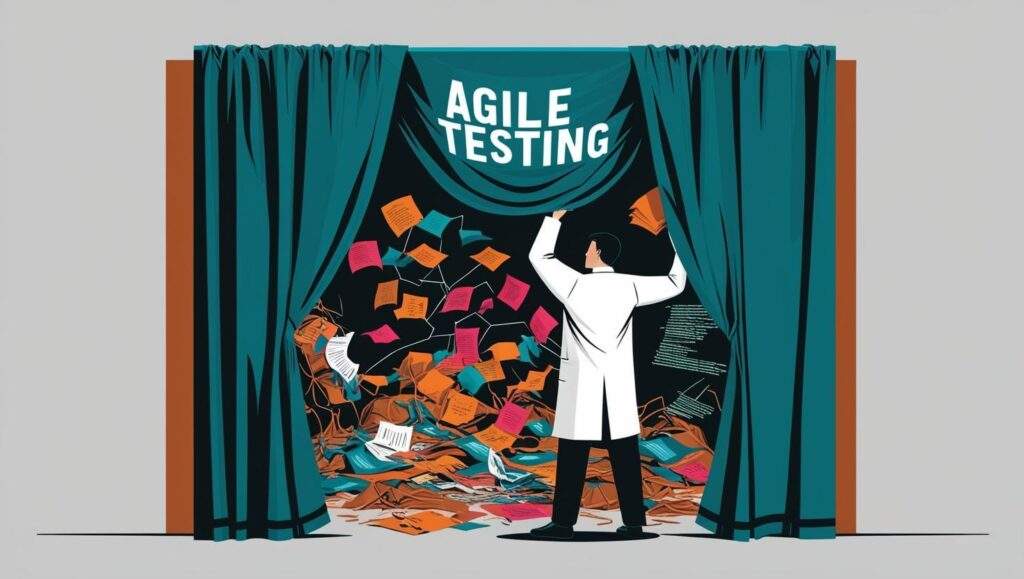
Introduction
Agile testing is often misunderstood. Many teams believe they’re following Agile QA principles, but in reality, they’re just repackaging old-school waterfall testing in smaller iterations.
The truth? Most Agile teams don’t test the right way.
- They either rush testing to meet sprint deadlines.
- Or they treat QA as a secondary role instead of integrating it into development.
- Worse, they expect automation to replace real testing without actually understanding the risks.
Let’s break down why most teams are failing Agile testing and what you should actually be doing to make QA truly Agile.
1. Agile Testing is Not Just “Fast Testing”
Many teams assume that Agile testing means:
- Running tests quickly to keep up with sprint velocity
- Automating everything to reduce manual effort
- Skipping detailed test design because there’s no time
This is where most teams go wrong. Agile testing isn’t about speed; it’s about continuous quality integration.
What Agile testing should be:
- Testing integrated into every phase of development (not just before release)
- Collaboration between QA, devs, and PMs to define testable acceptance criteria
- Manual, exploratory, and automated testing working together
If you’re only testing at the end of the sprint, you’re still doing waterfall in smaller cycles.
2. Stop Thinking “Automation Replaces Manual Testing”
Automation is not a silver bullet. Many Agile teams fall into the trap of over-relying on automation, thinking it eliminates the need for manual testing.
Reality check: Automation only validates what you already know—it doesn’t find unknown defects.
Where Automation Fails in Agile Testing:
- When testing new features – Unscripted exploratory testing finds more edge cases than automated checks.
- When UI constantly changes – Automation scripts break often, causing teams to waste time fixing tests instead of testing features.
- When critical business logic needs deep validation – Automated tests follow predefined paths, but real users take unpredictable actions.
How to Use Automation Effectively in Agile QA:
- Automate repetitive regression tests to free up testers for exploratory work.
- Combine API, UI, and integration tests instead of relying purely on UI automation.
- Use automation as a support tool, not a replacement for critical manual and exploratory testing.
3. Agile QA is More Than Just Writing Test Cases
Many Agile teams only test what’s in the acceptance criteria, but real users don’t follow scripts.
What You Should Be Doing Instead:
- Bug Hunts: Assign testers to actively search for hidden issues beyond the acceptance criteria.
- Risk-Based Testing: Focus testing efforts on high-impact areas instead of treating every test case equally.
- Early Collaboration with Devs and PMs: QA should be involved before coding starts, not after.
The best Agile QA teams don’t just follow requirements; they challenge them.
If you’re only testing what’s written, you’re missing real-world bugs.
4. QA is Not Just “Checking”, It’s Risk Management
Most teams treat QA as:
- Confirming that features work
- Logging bugs when they don’t
But that’s not enough.
As a QA professional in Agile, you need to think beyond pass/fail.
- How does a failed feature impact the user?
- What edge cases weren’t considered in development?
- What dependencies could break if something changes?
How QA Should Function in Agile:
- Risk analysis should drive testing decisions.
- Testers should question assumptions in user stories.
- QA should push for quality ownership across the entire team.
Agile testing is not just executing test cases, it’s about making sure quality is built into the product, not checked at the end.
Conclusion: If You’re Only Testing at the End of the Sprint, You’re Doing It Wrong
The biggest lie about Agile testing? That it’s just waterfall in two-week cycles.
If your team is testing at the end, relying too much on automation, or treating QA as an afterthought, you’re not really doing Agile.
True Agile QA is:
- Integrated into the development process from the start
- A mix of manual, exploratory, and automation testing
- A strategic approach to risk, not just a checklist of test cases
Stop following bad Agile testing practices and start actually making QA an Agile-first function.


Comments are closed.